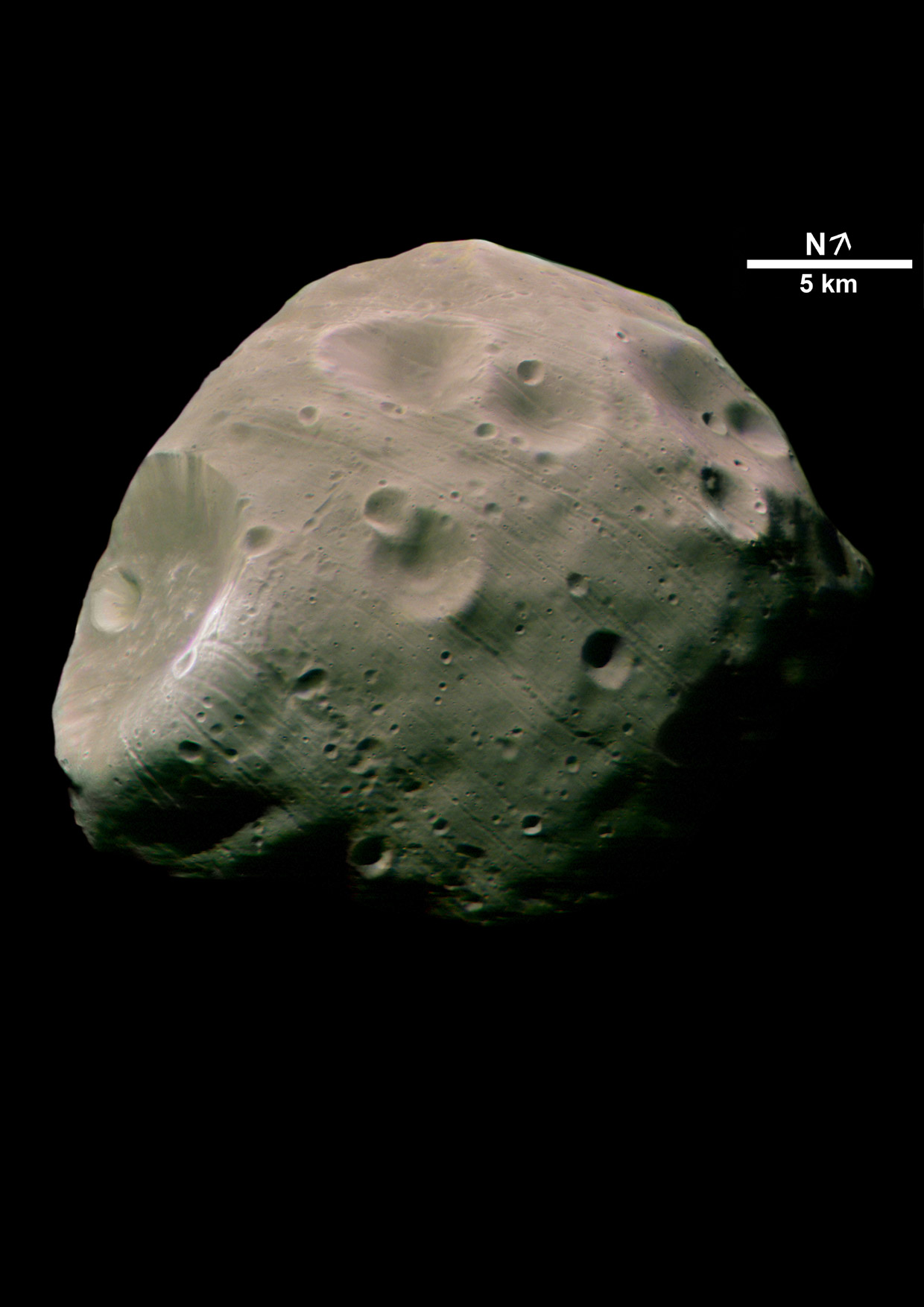Phobos and Deimos
In 1877, the American astronomer Asaph Hall discovered two small moons circling the planet Mars. They were named Phobos (Fear) and Deimos (Panic). More than 130 years later, scientists are still trying to unravel the mysteries of these moons.
They may be asteroids – small rocks left over from the birth of the planets – that were captured by Mars.
Both moons are blacker than coal and look like battered potatoes. Phobos is 27 km across at its widest point and has a large impact crater on one side. It flies around Mars three times in one Martian day.
Deimos is even smaller – one of the smallest moons in the Solar System. It is further from Mars, so each orbit around the planet takes a little over one day.
Their small size means that gravity on both moons is very weak. An astronaut standing on Phobos would be 1000 times slighter than on Earth. Any large jumps might result in the astronaut flying off into space!
Close flybys by ESA’s Mars Express spacecraft have provided clues about what these planets are made of and where they came from.
Mars Express is the only spacecraft presently operating around the Red Planet which is in a highly elliptical (egg-shaped) orbit. This path takes it across the orbit of Phobos, enabling it to see all sides of the little moon. (Like Earth’s Moon, Phobos always keeps the same face towards the nearby planet.) Between 23 July and 15 September 2008 , Mars Express carried out eight flybys of Phobos, sweeping past at distances ranging from 4,500 km to only 93 km.
Close-up images show that Phobos, the larger moon, is a potato-shaped space rock measuring just 27 km x 22 km x 19 km. It is very dark - blacker than coal – and heavily cratered. By carefully tracking the way Phobos pulls on Mars Express during each flyby, scientists have found that the satellite is not very dense. It is almost certainly a ‘rubble pile’ - made of many chunks of rock, held together by gravity - rather than a single, solid object.
Mars Express studies suggest that Phobos and Deimos may once have been asteroids that orbited the Sun between Mars and Jupiter. However, no one can yet explain how they were captured by Mars and ended up in ‘normal’ orbits above its equator.
Last modified 17 November 2010





